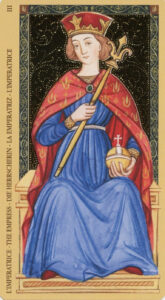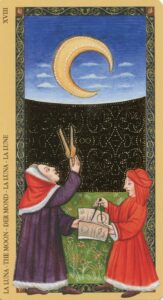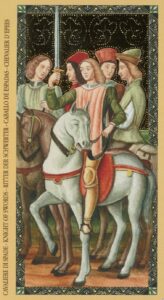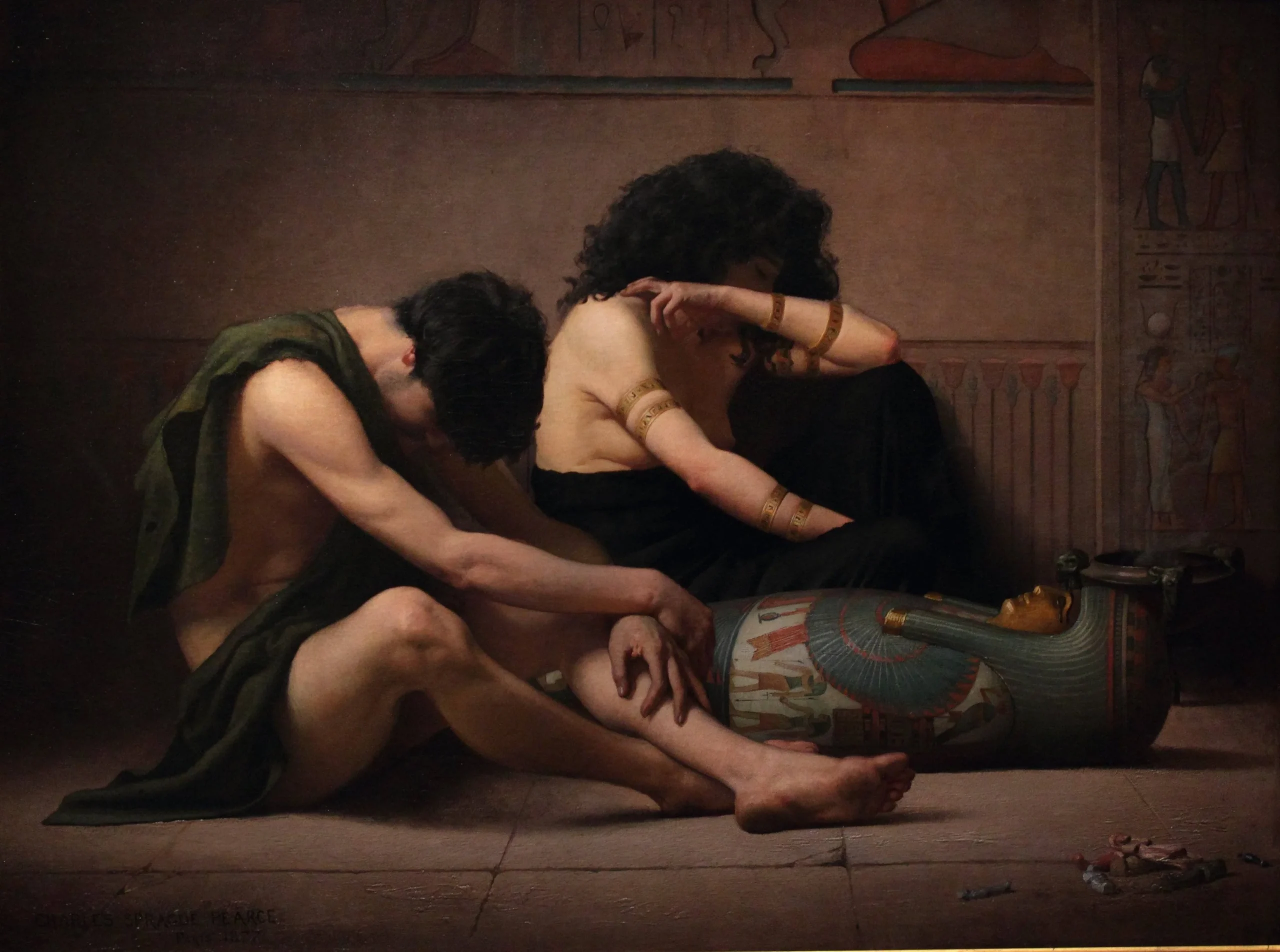Every sacred feast is also a map of absence, a liturgy of what remains at the threshold: longing, hunger, and exile. In the drama of Corpus Christi, as in the entire Western tradition, the body has so often been the absent guest: spoken of, disciplined, abstracted, and yet never fully welcomed to the centre of the altar. This reading, drawn across the cardinal points, confronts the mystery of the body’s exclusion and the secret promise of its liberation. The cards, drawn on June 19, compose a journey through origins, manifestations, the shadowlands of desire, and the weapons turned against flesh. To read them is to decipher not only personal but collective wounds: a vision for all who seek the restoration of the lost trinity of body, soul, and spirit.
North – The Empress: The Origin of Exile

At the root of the body’s banishment from the sacred lies the promise and peril of fecundity. The Empress, ancient mother and sovereign of earth, stands as the archetype of life’s generative power. She is abundance, sensuality, birth, and the perpetual overflow of matter. In ancient cults and mystery traditions, the maternal body was at the centre: Demeter in Eleusis, Isis in Egypt, even the early Christian Madonna. But, as ecclesial structures hardened, this potential for creation became a source of anxiety and discipline. The medieval Church, inheriting both Hebraic and Platonic suspicions, sought to regulate, then to distance, this creative force; the body, once altar, was remade as vessel, then as risk. The language of original sin, the obsession with purity, the fear of blood and eroticism, these all are shadows of the Empress’s abundance, half-envied, half-condemned. In ritual, the fertile flesh was masked beneath veils and dogma, the feast made to gesture towards a Mystery it could no longer bear in its fullness. The root of exclusion is not the body’s weakness but its indomitable strength; the fear that, left ungoverned, matter will birth new worlds beyond the reach of doctrine.
South – King of Cups: The Current Drama of Containment

Today, the drama of the excluded body survives not in open banishment, but in subtle containment. The King of Cups presides over a court where feeling is allowed, but always under governance; where flesh is present, but only as mirror to the soul, never as subject in its own right. This is the legacy of asceticism refined into etiquette, of penance sublimated into civility. From the writings of Cassian to the directives of Counter-Reformation confessors, the body is expected to serve, to reflect, to endure, its wildness harnessed in the name of spiritual order.
One may fast, kneel, even weep, but always in prescribed measure, lest the chaos of the Empress return. The body’s instincts are permitted as distant echoes, rarely as living voice. Even liturgical reform, intended to draw the laity into fuller participation, often comes with invisible restraints: one may touch, taste, or sing, but always within boundaries designed to maintain decorum and hierarchy. The result is a quiet sorrow, a body half-welcomed, never quite embraced, a nostalgia for a lost immediacy, where to be flesh was itself a sacrament.
East – The Moon: Possibility and Peril of Re-integration

But there are moments when the body reasserts its ancient rights, not through permission, but through dream, memory, and the logic of night. The Moon, guardian of thresholds and guide through the uncertain, marks the way of return. The path here is neither rational nor linear: it winds through shadow, desire, trance, and those liminal states where body and soul are not enemies but co-conspirators. Mystics and visionaries, from Hadewijch and Hildegard to the desert mothers and fathers, understood that the flesh was a source of revelation as well as temptation. In their accounts, ecstasy and suffering are indistinguishable; the body in rapture is as close to the divine as any angel.
To reintegrate the flesh is to risk chaos, including the loss of easy boundaries, the confrontation with pain, the seduction of illusion. But it is also to rediscover the body’s wisdom: its cycles, wounds, and pleasures as sites of gnosis. The Moon offers not a return to innocence, rather a plunge into ambiguity, where every sense, ache, embrace becomes a potential epiphany.
West – Knight of Swords: The Blade of Resistance

The greatest obstacle to this liberation remains the impulse to divide, to discipline, to cut away what cannot be contained or explained. The Knight of Swords rides as both champion and adversary: armed with reason, doctrine, polemic, he wages war against ambiguity in the hope of achieving clarity, control, salvation. This figure is present wherever the body is made a problem to be solved, a threat to be named and exiled rather than a mystery to be lived.
The history of theology is, in part, the history of such swords: Augustine’s suspicion of pleasure, the medieval penalties for carnal sin, the codes of exclusion that marked the sick, the sexual, the untamed as other. The Knight’s passion is not always malevolent; it can be born of zeal, love, or even fear. But, when the sword becomes the only tool, it turns all bodies into enemies, all Mysteries into heresies. The challenge of the West is to lay down arms, to allow for what cannot be resolved, to grant the body a place at the table, not as conquered territory, but as sovereign participant in the feast of life.
